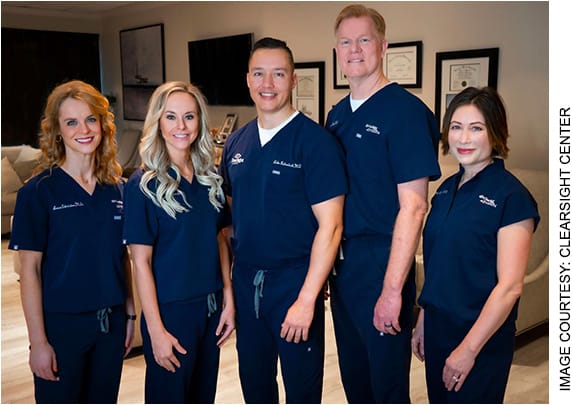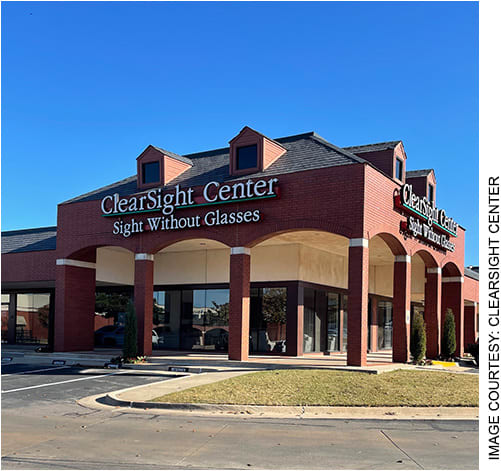
How recognizing past mistakes led to a successful practice
About 6 years ago, I joined ClearSight Center as an associate. I was recently out of fellowship and ready to begin a successful refractive surgery career. I was fortunate; the practice had a 22-year history of providing quality laser vision correction (LVC) and was a dominant player in the market. However, the founder, Gary Wilson, hired me because I was “trained” in everything “new” in refractive surgery. In short, that meant I was to perform LVC and bring implantable collamer lenses (ICL), corneal inlays, refractive lens exchange and cash-pay cataract surgery to a legacy LVC practice. Even more, I was to purchase and continue the practice upon the founder’s retirement, which would ultimately happen about 3 years later.
After the 10,000-foot-view directive was set, we had to implement our plan. As we all know, refractive surgery is market-based and arguably elective. That means that price points, packages, marketing and financing must be determined based on market research and your value proposition. Conversely, compensation through medical insurance, although diminishing over time, provides a fairly set value so that you will be compensated for the work you do.
We knew that presbyopia was a large and underserved market, and we were excited to offer the recently approved Kamra inlay (AcuFocus at the time) as well as improved advanced technology IOLs. The ICL could also allow us to treat non-LVC candidates.
As in many startups, however, we unfortunately made some implementation mistakes from which we would have to pivot.
OUR MISTAKES
1. Complexity of offerings
We wanted to have packages for everyone. This translated into a fee structure so complex that not even our counselors could keep it straight, and if they didn’t understand it, our patients didn’t stand a chance.
2. Brand dilution
Who were we? Were we ClearSight LASIK? ClearSight Center? We tried to find a common marketing message that appealed to the LVC and presbyopia demographics. We found that when volume increased with one, the other went down.
3. Marketing the procedure
We marketed Kamra, the ICL or other specific procedures. Patients saw our offerings as a commodity, where the only way to compete was on price.
After 1 year, our practice was doing OK but not thriving. Thankfully, we recognized our errors and pivoted.
OUR SOLUTIONS
1. Simplification
We simplified the fee structures to no more than three options. This now translates into a good, better and best option based on services, not technology.
2. Focus
Finding a common message for all customers was challenging, if not foolish. We now focus on one market segment and message per brand and keep it simple and memorable. Now, both presbyopia at 43 Vision and LVC at ClearSight LASIK are growing rapidly.
3. Marketing the ‘why’
The most important lesson we learned was that doctors care more about technology than their patients do. We now only market results, experience and benefits. Marketing solutions for readers and bifocals is better than marketing a specific lens or inlay.


CONCLUSION
The last few years have certainly been challenging, but also extremely exciting. By implementing changes quickly, we were able to grow the practice revenue by approximately 150% and add two surgeons in the process.
My biggest takeaway from this time, though, is just how necessary it is to evaluate your practice on a regular basis. We can’t be afraid of making necessary changes that are a win-win for patients and our practices! OM
If you have a practice management story you would like to share in an upcoming issue for Lessons Learned, we want to hear it. Email us at julie.greenbaum@pentavisionmedia.com.









